- Learning time
- 60 minutes
- First play time
- 220 minutes
Wallenstein
Designed by: Dirk Henn
In Wallenstein players compete to establish dominance in 17th century Germany over two “years” that break into 8 game rounds (or ‘seasons’) in which players exploit the German regions for gold and grain, erect buildings, resupply their armies – and fight each other.
What makes Wallenstein a fascinating struggle is the gameplay. Each player has ten options with which to implement the above actions – to do so, they simply choose a region (of the ones they currently occupy) and play it to the chosen action on their own gameboard.
However all of these choices are made secretly, then revealed simultaeneously. So plans always carry an element of risk: not supplying a region with reinforcements and building a prestige building there may backfire if an opponent has chosen to invade. And conversely raiding an opponent’s poorly defended region can become a bigger job than planned when neighbouring, friendly forces arrive.
Wallenstein is a wonderful blend of shrewd choices with a delicious seam of luck running through it. As well as trying to predict the other players moves every battle is also at the mercy of the tower – a cardboard construction through which cubes are thrown to decide battles. It can occasionally throw up surprising results.
Not a game for the faint-hearted in terms of length and combative play, Wallenstein will really reward gamers who like to play something meaty – over a sunday afternoon, or into the late hours of an evening! (It inspired a sequel of sorts in the Japan-themed Shogun)
The guru's verdict
-
Take That!
Take That!
The game is all about attacking, defending, and second-guessing. It's not one for young children or the brittle ego.
-
Fidget Factor!
Fidget Factor!
Players make choices simultaneously, so as long as there isn't one player taking longer than everyone else, there isn't a great deal of down-time.
-
Brain Burn!
Brain Burn!
Wallenstein involves managing the possibilities of your own regions and the probabilities of the other players moves. Even the multi-taskers can find this a challenge.
-
Again Again!
Again Again!
Wallenstein is a long game and a challenge – not in terms of rules, but juggling options. However the tower and random set-up ensures no two games are ever the same.



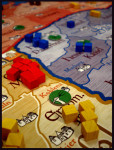
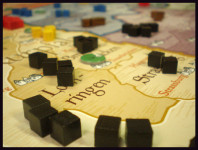
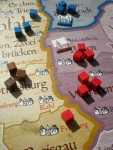



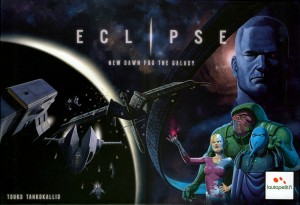
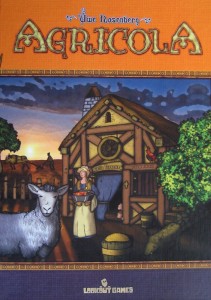
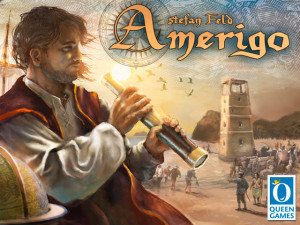
Sam says
I rarely play Wallenstein because it is a bit of a table-eater in terms of room and time - as a regular board-gamer my preference is for shorter games. But I'd recommend it anyway because it is a rarity: if you like combative games that also contain elements of strategy (card order) tactics (when card order implodes!) randomness (the cube tower) and second-guessing your opponent's plans. It can be brutal, but I do rate it as a very good game.